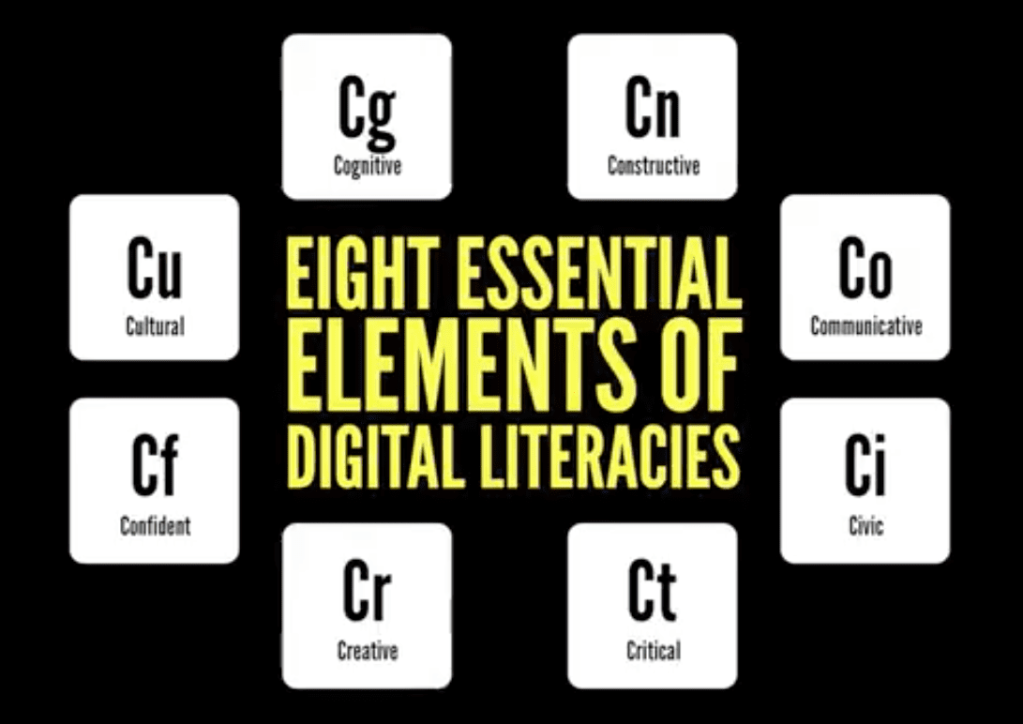In my previous post I argued that Prensky’s (2001) dividing of digital literacies into ”native” and ”immigrant” was reductive and colonial. In this post I will discuss Doug some more recent contributions to understanding digital literacies.
White and Le Cornu’s (2011) distinction between ”visitor” and ”resident” seems already more promising than Prensky’s between ”native” and ”immigrant” — largely because the former are by definition more ephemeral categories. Where we are resident can change, and there is no problematic appeal to the ”in-born” ability gestured to with the word ”native”. While one could argue that Prensky’s observation of the very serious difficulties that those who have grown up with different technologies, before or after the ”disjuncture” or ”singularity” of Internet age, it certainly is not far from wrong to say that we all encounter difficulties when trying to take up residence in a new ”place” — and these difficulties could be understood as caused by language, culture, or other differences, depending on our level of familiarity or prior knowledge of the place we are ”moving” to. It certainly is a more flexible metaphor.
 Complicating the picture of digital literacy (White 2014a)
Complicating the picture of digital literacy (White 2014a)
White further complicates this with his second axis: that of institutional versus personal spaces. It is clear now that we are dealing with a different paradigm, in that a certain compartmentalisation of our social practices is being taken into account: we are not just comfortable or uncomfortable in different technological spaces because of our level of familiarity with the ”language” of that space: We are also relating to other users in spaces differently depending on whether we regard them as personal or institutional. The mapping of different platforms onto the space can provide some useful insights into understanding how to conceptualise the digital literacies of diverse groups of people coming together in order to achieve some shared aim using these technologies. These context dependencies — as he says, ”not opposing forces but a sliding scale” — are also the spur for Doug Belshaw’s 2012 TEDTalk presentation, where he argues for moving beyond ”Digital Literacy” as a concept to a complex notion of ”Digital Literacies” – which he breaks down into their ”eight essential elements”.
 Belshaw’s (2012) eight essential elements of digital literacies
Belshaw’s (2012) eight essential elements of digital literacies
These eight elements, against Whites axes, clearly form a more solid grounding for theorising the various types of digital literacies we are likely to encounter in the real world, in a way that escapes the caricatures of ”natives” and ”immigrants”.

If I map out five of the platforms that I use fairly regularly, I would be able to arrive at a fair description of my literacies and their contexts within various contexts, while at the same time making sense of my reaction (resistance/excitement) to using these platforms for different purposes. For example, I am really enjoying using Zoom for the purposes of participating in the ONL191 course. I am now trying to convince more people to use Zoom instead of Skype — but I continue to use Skype to chat with family, friends, and professional contacts who are uncomfortable with Zoom. The process of recruiting people to Zoom — selling the more stable connection and easier interface — is complicated by the fact that I am not yet 100% sure of how to run Zoom meetings, the extent to which my experience of Zoom has been shaped by my institutional environment, and the ease of use for others outside of that environment. I need to deepen my understanding of this platform before I get other people using it.
I am quite resistant to the inclusion of Twitter as a platform in this course, at least as a participant, largely because my followers on Twitter are not going to be interested in our internal discussions on ONL191 and I would therefore only be able to observe the tweet sessions, and not participate (without losing followers). The idea of setting up a new Twitter account solely for the purposes of this course is a little exhausting (the e-mails, the passwords, etc.) and so I have resisted that aspect of this course.
Works referenced
Belshaw, Doug. The Essential Elements of Digital Literacies: Doug Belshaw at TEDxWarwick. TEDx Talks, 2012. https://www.youtube.com/watch?v=A8yQPoTcZ78.
Jisc. “Developing Digital Literacies.” Education. Jisc, no date. https://www.jisc.ac.uk/full-guide/developing-digital-literacies.
Prensky, Marc. “Digital Natives, Digital Immigrants.” On the Horizon9, no. 5 (October 2001): 6.
White, David. Part 1: Visitors and Residents. Jiscnetskills, 2014. https://www.youtube.com/watch?v=sPOG3iThmRI&feature=youtu.be.
White, David. Part 2: Credibility. Jiscnetskills, 2014. https://www.youtube.com/watch?v=kO569eknM6U.
White, David S., and Alison Le Cornu. “Visitors and Residents: A New Typology for Online Engagement.” First Monday16, no. 9 (August 23, 2011). https://doi.org/10.5210/fm.v16i9.3171.